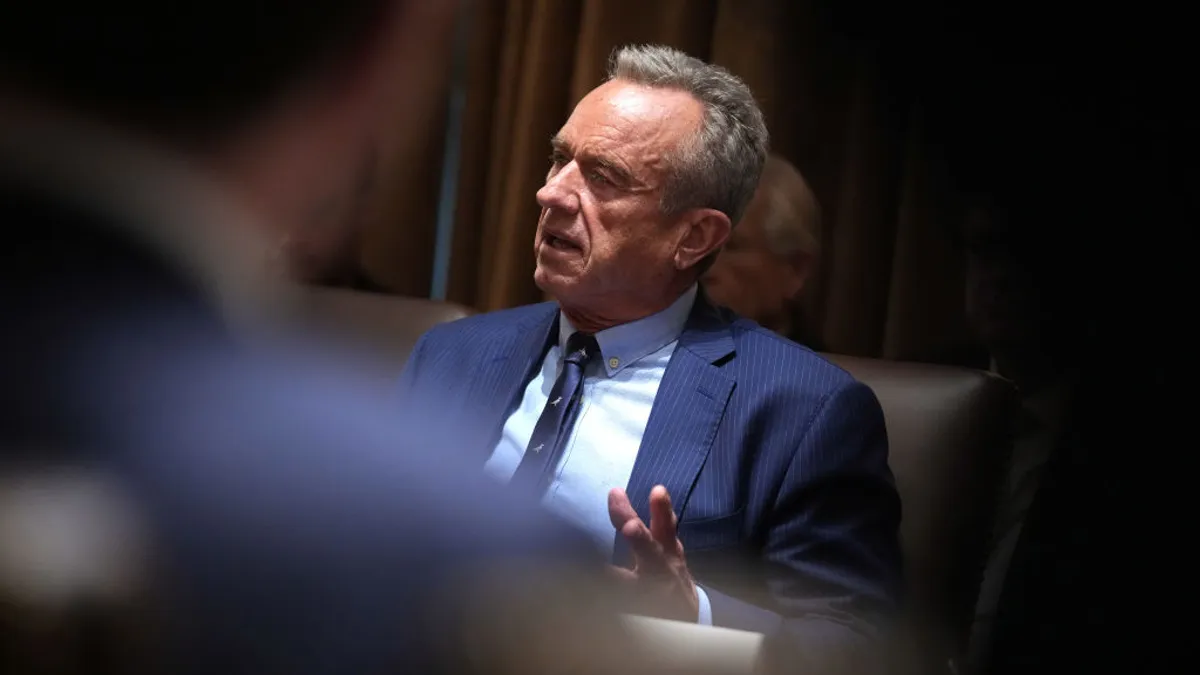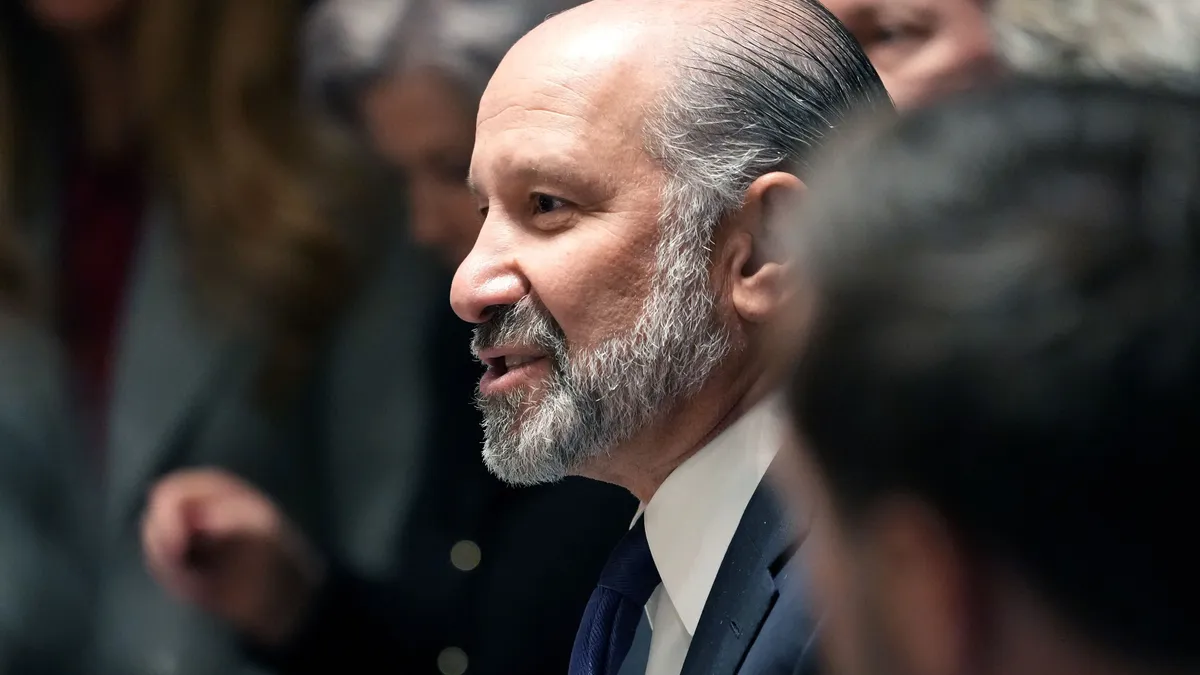The sudden firing of Food and Drug Administration employees over the weekend is already affecting medical device submissions.
The cuts could delay the time it takes to bring new products to market and add to pressure on remaining staff at the FDA’s device center. Advamed, one of the industry’s largest lobby groups, has criticized the cuts, saying they would negatively affect medical device companies and could put patients at risk.
“We've heard from folks who have already gotten notice that current applications may be delayed or suspended,” Advamed CEO Scott Whitaker said in a Wednesday press call.
A current and a newly fired FDA employee, who spoke to MedTech Dive on condition of anonymity, as well as an attorney raised concerns that the staff cuts could dramatically slow the process for preparing and reviewing medical device submissions, especially for devices with complex components such as artificial intelligence.
“You’re adding months if not years to the overall timeline of getting products to market as a result,” said Jason Brooke, an attorney and managing member at digital health advisory firm Brooke and Associates.
The firings already hampered a meeting that Brooke had scheduled for Tuesday to discuss a client’s 510(k) submission for a medical device.
“Unfortunately, the lead reviewer called me this morning and told me the three subject matter experts that were supposed to be on the call today were let go over the weekend,” Brooke said.
Top medical device companies, including Johnson & Johnson, Boston Scientific and Edwards Lifesciences, declined to comment on the firings. Medtronic, Stryker and Abbott did not immediately respond to requests for comment.
CDRH likely lost more than 200 people
The FDA and the Department of Health and Human Services have not disclosed the number of employees cut over the weekend. The FDA did not respond to MedTech Dive’s requests for comment, and HHS spokesperson Andrew Nixon declined to confirm specific numbers.
Whitaker said he heard between 230 and 240 people were cut at the Center for Devices and Radiological Health, and Brooke said he heard from FDA sources that more than 200 people were cut.
The CDRH had a total of 2,230 employees as of 2023. Annual reports describing the number of employees in 2024 and previous years were recently removed from the FDA’s website.
“Folks are just uncertain and unsure about what the impact will be, and you really don’t like to have uncertainty right now,” Whitaker said.
Whitaker and the current and former CDRH employees said the cuts largely affected probationary workers. Probationary employees have typically been at the HHS for less than two years, but the designation can also include people who recently moved to a new position. Probationary employees have fewer employment protections than other federal workers.
The Associated Press reported last week that some officials on a recorded meeting said they expected the HHS to fire 5,200 probationary employees across its agencies, which include the FDA, the Centers for Medicare and Medicaid Services and the Centers for Disease Control and Prevention.
Thousands of federal positions have been slashed in the opening weeks of the Trump administration, according to a tally from the AP. The cuts have been spearheaded by the recently renamed Department of Government Efficiency and Elon Musk, a close adviser to President Donald Trump and the world’s richest person.
Several managers and staff at the CDRH were caught off guard by the sudden firings over the weekend, according to the former and current CDRH employees, who spoke with their colleagues. An AI expert who worked at CDRH until last week said they received a letter from the HHS with the subject line, “read this email immediately.” The email contained an attachment claiming they were being “terminated for poor performance.” The former employee, who had been at the FDA for less than two years, said they had received strong performance reviews, and their managers had no idea what was happening.
The current CDRH employee wrote that they spoke to colleagues cut over the weekend, who noted that their managers, including deputy directors, did not receive any notice of the terminations on their staff.
AI expertise affected
The firings spanned several parts of the CDRH, in particular affecting people who specialize in AI.
The AI expert estimated about half of their division was cut. Other outlets, including Stat, have reported that AI and digital health staff were hit hard by the terminations.
“One of the areas we’re most concerned about … is really the fact that a lot of these appear to be newer employees that had a new tech, AI expertise,” Advamed’s Whitaker said, adding that new technologies can be the most challenging and complicated part of the device approval process.
The current CDRH employee said nearly a quarter of staff was lost in the Office of Science and Engineering Laboratories, including staff fellows and probationary employees. The people who work there are often subject matter experts pulled in to help with reviews of complicated or new technologies, the person said.
Reuters, citing anonymous sources, reported that 20 people were cut from the CDRH’s Office of Neurological and Physical Medicine Devices, which includes several people who worked on Neuralink, the brain-computer interface company that Musk owns.
Ross Segan, who was named head of device evaluation and quality for the CDRH in September, was also caught up in the firings, according to Stat. Whitaker assumed that Segan was cut because he had been in the position for less than a year, adding that Advamed hopes to “correct that so we can get him back in that role.”
Former FDA Commissioner Robert Califf condemned the cuts, raising concerns about safety and postmarket surveillance.
“Any place that gets cut, it's going to have an impact, because there's not any spare personnel at FDA,” Califf said in an interview with sister publication BioPharma Dive.
The role of user fees
The CDRH has grown in recent years in part because of requirements set out in the center’s latest user fee agreement, which sets out the amount the FDA can charge device makers in fees in exchange for agreeing to certain staffing milestones and product review timelines. Those goals included 144 hires in 2023 and 42 hires in 2024.
The FDA will review the next Medical Device User Fee Amendments (MDUFA) with device makers in 2027.
Whitaker said new employees hired under those user fee goals may have fallen into the category of probationary workers that were cut.
“If your intent was to cut some of the fat out of an agency, the result of your action is not that,” Whitaker said. “It's to cut the newest employees with the most specialized skills relative to emerging technologies, particularly in the digital and AI space.”
Whitaker said Advamed is still assessing the legality of the firings. Advamed plans to focus on user fees over the next few days and hopes that by getting the administration to understand the impact of the cuts, the situation can be fixed.
“If that’s fixed then I don’t think we have a problem,” Whitaker said. “If that isn’t fixed, and there are a large scale of MDUFA employees that have been impacted by that, then we’re going to have to consider what we do about it, either through Congress or through other means.”
Brooke, the attorney with Brooke and Associates, said the firings could not only affect the time it takes for the FDA to review submissions, but could also slow work that is done before a submission is sent to the agency. For example, it may take longer for clients to get feedback on clinical trial protocols. Q-submission meetings, which give developers an opportunity to ask the FDA for feedback on planned devices, may be delayed or potentially not happen at all, Brooke said.
“I have substantial concerns as should everyone in the medical device industry and the United States,” Brooke said. “At some point in our lives, someone we know, if not ourselves, will be impacted by medical devices.”
Ned Pagliarulo contributed reporting.



















